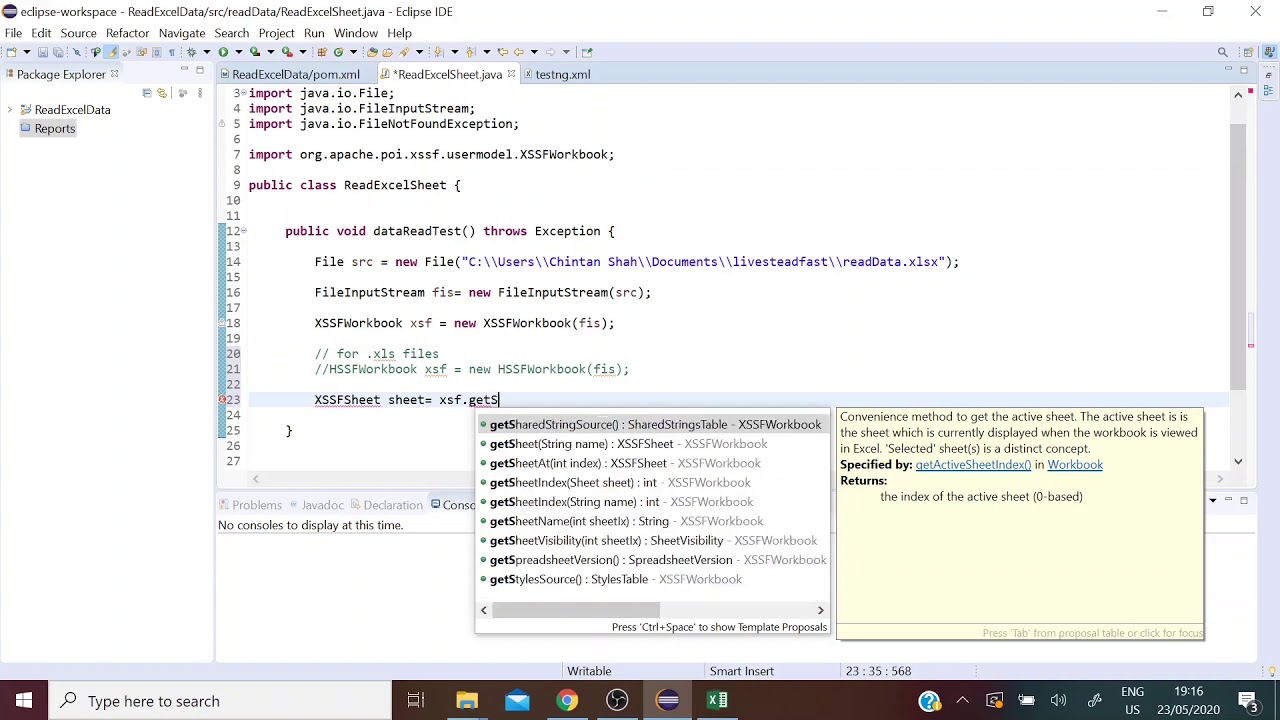5 Ways to Fetch Excel Data Using Selenium

The world of web automation, especially for extracting data from web applications, has seen immense growth in recent years, and one of the most popular tools for this task is Selenium. With its ability to interact with web pages like a human user, Selenium can be employed to fetch data from various sources, including Excel files embedded in web pages or hosted online. In this post, we will explore five effective methods to extract data from Excel files using Selenium, which is particularly useful for web developers, data analysts, and automation enthusiasts.
Method 1: Directly Downloading Excel Files

The simplest way to fetch data from an Excel file online is by directly downloading the file. This method is handy when the Excel file is presented as a downloadable link within a web page. Here’s how you can automate this process:
- Initialize the WebDriver for the browser of your choice.
- Navigate to the webpage containing the link to the Excel file.
- Locate the download link using Selenium locators.
- Automate the click event to download the file.
- Wait for the download to complete.
💡 Note: Make sure your WebDriver is set up to handle file downloads, which might involve configuring download preferences in the browser.
Method 2: Using JavaScript Execution to Interact with Hidden Links

Not all Excel file links are easily clickable. Sometimes, they might be embedded in such a way that they require more than just a simple click. Here’s what you can do:
- Launch the WebDriver.
- Use JavaScript to click on the hidden or script-generated link.
- Set up a custom download path in the WebDriver's options.
Method 3: Web Scraping Inline Excel Data

If an Excel file’s contents are loaded inline on the web page, Selenium can help scrape this data directly. Here’s the process:
- Navigate to the page with the embedded Excel data.
- Identify the elements that contain Excel data, often tables or divs with a specific class.
- Use Selenium's
find_elements_by_xpathor similar methods to extract the data. - Parse this data into a structure that can be processed or exported.
🔎 Note: Be aware that scraping inline data might require you to handle special characters or formatting issues which are common in Excel files.
Method 4: Downloading via API Calls

Sometimes, web pages allow you to download data via APIs, which can then be used to extract Excel data. Here’s how:
- Inspect the web page to find any AJAX calls or API endpoints that download Excel data.
- Use Selenium to simulate an AJAX request through JavaScript execution.
- Capture the response, which should contain the Excel file or data.
- Process the data or save the file using Python libraries.
Method 5: Using Browser Extensions

If none of the above methods work, consider using browser extensions or add-ons:
- Install an extension that supports file downloads or allows manipulation of the browser environment.
- Control the browser extension through Selenium by loading a new profile with the extension pre-installed.
- Automate clicks or data extraction processes through the extension.
🚫 Note: Remember, this method might be the most complex and may require permissions to manage browser extensions.
In conclusion, fetching Excel data using Selenium provides a flexible and powerful way to automate data extraction from web-based sources. Whether it's by directly downloading files, scraping inline content, or using APIs and extensions, Selenium offers solutions tailored to various scenarios. By understanding and implementing these methods, developers can efficiently gather the data they need for analysis, reporting, or further processing, enhancing productivity and data accuracy in their workflows.
Can I use Selenium with any browser?

+
Selenium supports multiple browsers including Firefox, Chrome, Edge, and Safari, although support might differ for each version.
What do I need to set up before using Selenium for Excel data extraction?

+
You’ll need to install Selenium, have the appropriate WebDriver for your browser, and possibly set up your environment for handling file downloads and API calls.
How do I handle dynamic content loading with Selenium?

+
Use explicit waits or WebDriverWait to allow time for dynamic content to load before proceeding with actions like clicking or extracting data.